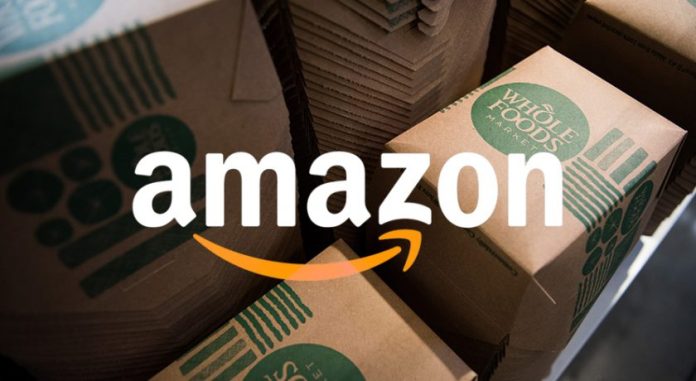It’s the magical stuff of Disney movies. But yesterday, the improbable became the most probable when the scrappy band of workers who make up the Amazon Labor Union took the lead in a union election at a warehouse in Staten Island, New York, putting within reach a historic labor win at the corporate behemoth.
Before the vote count most reporters had dismissed the independent union’s chances, treating the organizing as a curiosity at best. “I think we have been overlooked,” said ALU Treasurer Madeline Wesley Thursday night. “And I think that that ends tomorrow when we are victorious.”
The ALU clinched a decisive victory today, winning by a wide margin to create the first unionized workplace in Amazon’s extensive network of fulfillment, delivery, and sortation centers across the U.S. The company’s facilities are concentrated in metropolitan areas like New York, Chicago, and Los Angeles, opening a path for more organizing.
The vote at the Staten Island warehouse was 2,654 in favor of forming a union to 2,131 against. There were 67 challenged ballots, and 17 voided; 8,325 workers were eligible to vote.
“We want to thank Jeff Bezos for going to space, because while he was up there we were organizing a union,” said ALU President Chris Smalls after official results were announced.
Another warehouse at the same complex on Staten Island, LDJ5, will begin a vote to unionize with the ALU on April 25.
Mapped out the leaders
Thursday night in Brooklyn, after the first six of the 10 boxes of ballots had been counted, workers were giddy with excitement and disbelief, dancing to hip-hop and laughing.
“It seemed like a long shot,” said ALU Vice President Derrick Palmer outside the building in Bushwick, weighting each word for emphasis. “But we just went out there and did it—workers, unionizing the second-largest private employer in the country.”
The more Palmer spoke about what exactly they had done to accomplish the impressive feat, the clearer it became that neither magic nor luck had anything to do with the union’s victory; it was hardscrabble worker-to-worker organizing that got the goods.
Palmer has worked as a packer at Amazon’s sprawling warehouse complex for three years. He estimates that out of 100 people in his department, 70 percent were solid yes voters.
“I pretty much flipped my whole department,” he said. “What I’ll do is study a group of friends and go to the leader of the pack. Whatever the leader says, the rest of the group is going to do.”
Fellow ALU organizer Michael Aguilar agreed about the approach. For example, “Cassio [Mendoza] talks to all the Latino workers in the building,” he said.
“I knew that we would win because of Maddie [Wesley],” Aguilar added. “She’s so empathetic, so she can connect with a lot of people in the building. She was one of the key leaders.”
The independent union enlisted the support of volunteers from various unions and community groups to run a phone banking operation. Wesley tallied union support on the phones and in tabling outside the facility; it was during one such tabling that she recruited Aguilar to the organizing effort.
“Our data had about 65 percent support, which obviously has some margin of error because the people who are most likely to talk to us are most likely to be supporters,” said Wesley.
Most of the workers I spoke to didn’t use organizing lingo, but they had clearly mapped the warehouse. “We know in which departments, and on which shifts, we have strong support because of where our organizers are,” Wesley said.
ALU member Justine Medina credited Communist organizer William Z. Foster’s Organizing Methods in the Steel Industry for the group’s organizational acumen and bottom-up organizing approach. She and others on the organizing committee read and discussed it, giving it out to workers to read. (See sidebar.)
An inside job
The worker-led character of the organizing drive gave it credibility. When Amazon tried to portray the union as an outside “third party,” its highly paid consultants’ arguments would fall flat, because workers would take their questions to their ALU co-workers.
Meetings in the break room were decisive, Palmer said: “I was organizing in the break room on my days off like 10 hours a day, giving out food, talking to workers, and giving out information.”
Smalls said he urged co-workers, “Come have a conversation with me. Don’t just go off what you’re hearing from Amazon and the rumors.”
But collective actions were crucial too. “We showed them that we’re fearless,” said Smalls. “We did rallies in front of the building. We showed them, better than we can talk about it.”
Smalls led a walkout in March 2020 to protest the company’s failure to keep workers safe from the pandemic. Amazon fired him afterwards, supposedly for violating Covid protocols. Vice reported that the company’s general counsel insulted Smalls in a meeting with top brass, calling him “not smart or articulate.”
These remarks have elevated the charismatic Smalls as the face of the union drive. But asked about the media attention, he points to the collective struggle and emphasizes that the ALU operates on democratic principles, with all decisions voted on. “I’m just the interim president,” he said. “I’m temporary. It’s not my union; it’s the people’s union.”
Plenty more warehouse
Standing outside in a drizzle of rain Thursday night, he lifted his hand and pointed towards the Brooklyn apartment they’ve turned into their homebase: “That’s all I had was 20 core committee members, and a workers’ committee of over 100 people. We started with about four.”
Asked if ALU would consider affiliating with another union, he said, “I got to be with the people that was with me from day one. We want to stay independent, and it’s better that way. That’s how we got here.”
But, he adds, “whatever anybody is doing against Amazon, shiiiit, they got my support! There’s plenty of [Amazon] buildings. Pick one!”
He compared ALU’s culture to Money Heist, the Spanish Netflix series where a criminal mastermind known as “The Professor” brings a band of criminals together to take on the state and steal billions of euros from the Royal Mint. “Call me The Professor,” he jokes.
Smalls went from hip-hop hopeful to labor leader. “Life is crazy,” he said. “That’s all I can say. Who would have thought?”
Related posts:
Views: 0
 RSS Feed
RSS Feed















 April 3rd, 2022
April 3rd, 2022  Awake Goy
Awake Goy 

 Posted in
Posted in  Tags:
Tags: 
















